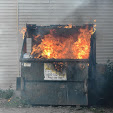
When Smith & Wesson stretched the cylinder window of the I-frame by slightly over a tenth of an inch in 1950 to accommodate a cylinder chambered for the .38 Special cartridge, they created a new frame designation: The J-frame. They also created what would become one of the company's best selling and longest-lived models: The .38 Chiefs Special, later known as the Model 36. Introduced before commercial jet air travel, the model is still being catalogued fifty-seven years later.
The blend of service revolver power and pocket gun size was a winning recipe, and the little 2" snubbie became synonymous with "detective's gun" or "off-duty gun" in no time flat. It was used by both heroes and villains in Hollywood and on TV. J. Edgar Hoover received one of the earliest ones, and police departments across the land purchased them in batches.
It didn't take long for variations to turn up. For example, a very limited number were made with target sights and in the 1990's Smith released the Model 36LS, or "Lady Smith", with attractive hardwood grips and "Lady Smith" engraved on the sideplate. The NYPD ordered a batch Model 36-1's with 3" barrels and square-butt frames to issue to female police officers who had a hard time with the double-action trigger reach on the standard issue Model 10.
The above revolver is an example of the 3" heavy barrel, square-butt Model 36-1. It was purchased back in '01 for $225, a price that was more than fair considering it's outstanding condition and the fact that it shows almost no wear. Current market value for an identical piece would probably be somewhere between $275 and $350, depending on in which area of the country the gun was sold and how badly the purchaser wanted an unusually-configured Chiefs Special.



